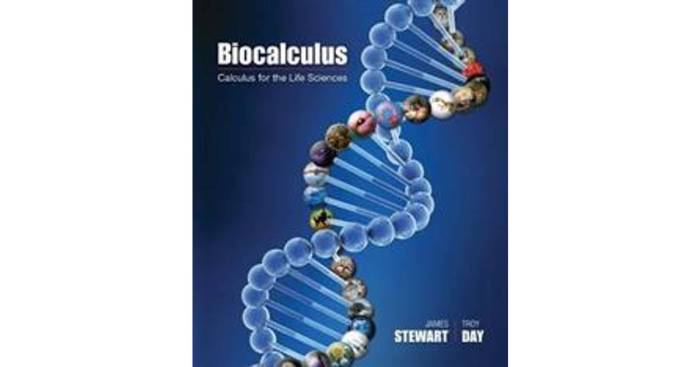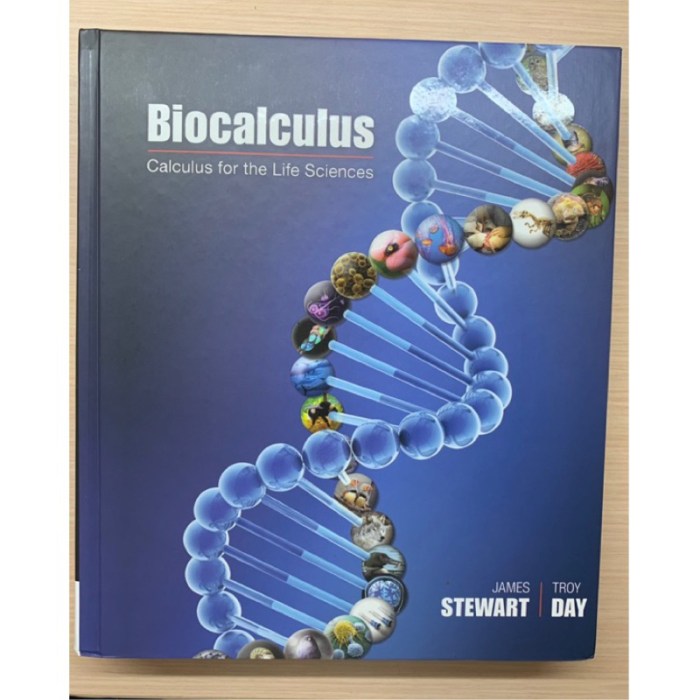Biocalculus calculus for life sciences – Biocalculus, a specialized branch of calculus, is revolutionizing the study of life sciences by providing a powerful mathematical framework for understanding complex biological phenomena. From population growth modeling to drug development, biocalculus has become an indispensable tool for advancing our knowledge of the living world.
At the heart of biocalculus lies the application of differential equations, partial derivatives, and integral calculus to solve problems in biology and medicine. These mathematical concepts allow scientists to model and analyze dynamic systems, such as the growth of bacterial populations or the spread of infectious diseases.
Introduction to Biocalculus

Biocalculus is a branch of mathematics that applies mathematical concepts and techniques to solve problems in the life sciences. It combines elements of calculus, statistics, and biology to provide a framework for understanding and analyzing biological systems and processes.
Biocalculus has wide-ranging applications in various fields of life sciences, including population ecology, epidemiology, physiology, and drug development. It enables scientists and researchers to model complex biological systems, make predictions, and gain insights into the underlying mechanisms that govern life.
Key Concepts in Biocalculus
- Differential equations:Equations that describe the rate of change of a biological variable over time.
- Partial derivatives:Functions that describe the rate of change of a biological variable with respect to multiple independent variables.
- Integral calculus:Techniques for finding the area under a curve or the volume of a solid, which can be applied to calculate biological quantities such as population size or drug concentration.
Applications of Biocalculus in Life Sciences, Biocalculus calculus for life sciences
Biocalculus has numerous applications in different fields of life sciences, including:
Population Growth Modeling
- Using differential equations to model population growth and predict population size over time.
- Estimating carrying capacity and determining the factors that influence population growth.
Epidemiology
- Developing mathematical models to understand the spread of infectious diseases.
- Estimating transmission rates and predicting the impact of interventions such as vaccination or social distancing.
Drug Development
- Using pharmacokinetic models to predict drug concentration in the body over time.
- Optimizing drug dosage and treatment schedules based on mathematical analysis.
Computational Methods in Biocalculus
Computational methods play a crucial role in biocalculus by enabling scientists to solve complex problems and analyze large datasets.
- Numerical simulations:Computer-based techniques for solving differential equations and simulating biological systems.
- Software tools:Specialized software packages designed for biocalculus applications, such as MATLAB or R.
Key Questions Answered: Biocalculus Calculus For Life Sciences
What is biocalculus?
Biocalculus is a branch of calculus that applies mathematical concepts to solve problems in biology and medicine.
How is biocalculus used in real-world applications?
Biocalculus is used in a wide range of applications, including population growth modeling, epidemiology, drug development, and environmental science.
What are the key concepts in biocalculus?
The key concepts in biocalculus include differential equations, partial derivatives, and integral calculus.
How can computational methods be used in biocalculus?
Computational methods, such as numerical simulations and software tools, can be used to solve complex problems and facilitate data analysis in biocalculus.


